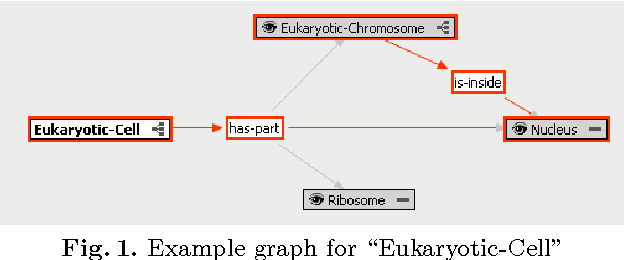Vinay K. Chaudhri
JPEC: A Novel Graph Neural Network for Competitor Retrieval in Financial Knowledge Graphs
Nov 05, 2024Abstract:Knowledge graphs have gained popularity for their ability to organize and analyze complex data effectively. When combined with graph embedding techniques, such as graph neural networks (GNNs), knowledge graphs become a potent tool in providing valuable insights. This study explores the application of graph embedding in identifying competitors from a financial knowledge graph. Existing state-of-the-art(SOTA) models face challenges due to the unique attributes of our knowledge graph, including directed and undirected relationships, attributed nodes, and minimal annotated competitor connections. To address these challenges, we propose a novel graph embedding model, JPEC(JPMorgan Proximity Embedding for Competitor Detection), which utilizes graph neural network to learn from both first-order and second-order node proximity together with vital features for competitor retrieval. JPEC had outperformed most existing models in extensive experiments, showcasing its effectiveness in competitor retrieval.
JEL: Applying End-to-End Neural Entity Linking in JPMorgan Chase
Nov 05, 2024Abstract:Knowledge Graphs have emerged as a compelling abstraction for capturing key relationship among the entities of interest to enterprises and for integrating data from heterogeneous sources. JPMorgan Chase (JPMC) is leading this trend by leveraging knowledge graphs across the organization for multiple mission critical applications such as risk assessment, fraud detection, investment advice, etc. A core problem in leveraging a knowledge graph is to link mentions (e.g., company names) that are encountered in textual sources to entities in the knowledge graph. Although several techniques exist for entity linking, they are tuned for entities that exist in Wikipedia, and fail to generalize for the entities that are of interest to an enterprise. In this paper, we propose a novel end-to-end neural entity linking model (JEL) that uses minimal context information and a margin loss to generate entity embeddings, and a Wide & Deep Learning model to match character and semantic information respectively. We show that JEL achieves the state-of-the-art performance to link mentions of company names in financial news with entities in our knowledge graph. We report on our efforts to deploy this model in the company-wide system to generate alerts in response to financial news. The methodology used for JEL is directly applicable and usable by other enterprises who need entity linking solutions for data that are unique to their respective situations.
Query Answering in Object Oriented Knowledge Bases in Logic Programming: Description and Challenge for ASP
Dec 20, 2013

Abstract:Research on developing efficient and scalable ASP solvers can substantially benefit by the availability of data sets to experiment with. KB_Bio_101 contains knowledge from a biology textbook, has been developed as part of Project Halo, and has recently become available for research use. KB_Bio_101 is one of the largest KBs available in ASP and the reasoning with it is undecidable in general. We give a description of this KB and ASP programs for a suite of queries that have been of practical interest. We explain why these queries pose significant practical challenges for the current ASP solvers.
 Add to Chrome
Add to Chrome Add to Firefox
Add to Firefox Add to Edge
Add to Edge